fuera de serie
Perspectivas sobre las políticas
más allá de los números
más allá de los números
Este contenido no está disponible en Español.
5 Things We Learned From Census About Poverty, Income, and Health Insurance
| By
CBPP
Here are five things we took away from the data that the Census Bureau released last week on poverty, income, and health insurance coverage in America.
- The economic recovery hasn’t yet produced significant gains for Americans in the bottom and middle of the economic scale. The poverty rate remained statistically unchanged at a high 15.0 percent in 2012 — the 11th year in the last 12 that poverty worsened or failed to improve.
- SNAP (formerly food stamps) has a powerful anti-poverty impact. The program lifted 4 million people above the official poverty line in 2012, when counting its benefits as income (which is not done in the official poverty statistics). In addition, SNAP also made a far larger number of people less poor. For these individuals, the program reduced the gap between their income and the poverty line and made them better able to afford a basic diet.
- Median household income has stalled, while income inequality has continued to worsen. The bottom 20 percent of households received just 3.2 percent of all household income in 2012. Meanwhile, Census figures showed that the top 20 percent of households got 51 percent, and the top 5 percent of households garnered 22.3 percent. A key measure of inequality known as the Gini index illustrated how income inequality has widened over decades. And, a recent study suggests that the Census income inequality trends may underestimate how much inequality is growing, as we explained last week.
- The share of Americans without health coverage fell for the second consecutive year. The rate of uninsured fell from 15.7 percent in 2011 to 15.4 percent in 2012, continuing the decline from the historically high of 16.3 percent in 2010. Coverage gains among children, expanded private coverage among the non-elderly, and increased enrollment in Medicare as the population aged were primarily responsible for the decline.
- Health reform has increased coverage among young adults. The Census Bureau’s American Community Survey, also released last week, showed that the share of 18- to 24-year-olds without health insurance coverage declined from 25.8 percent in 2011 to 24.3 percent in 2012. (The more well-known Current Population Survey also found that the uninsured rate among young adults fell again in 2012, but to a lesser degree and not on a statistically significant basis.)
Imagen
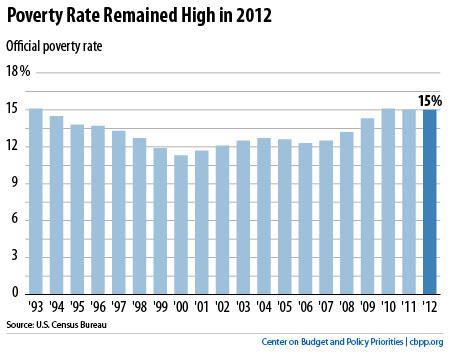
Imagen
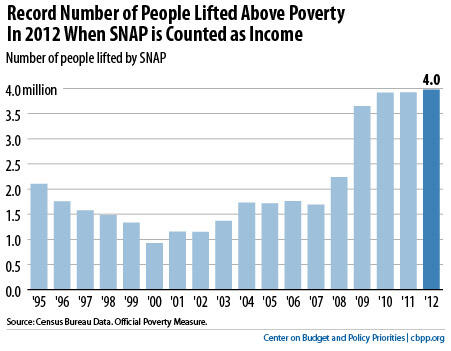
Imagen
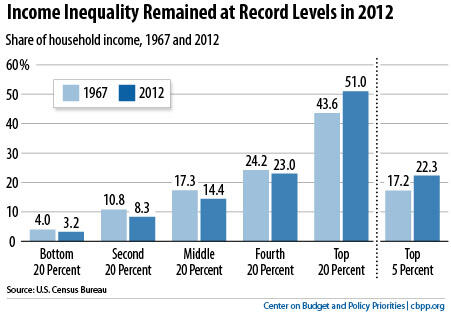
Imagen
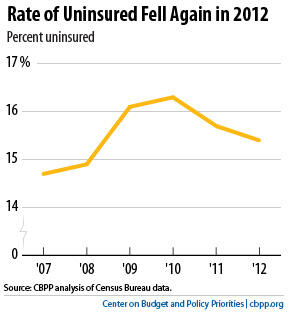
Imagen
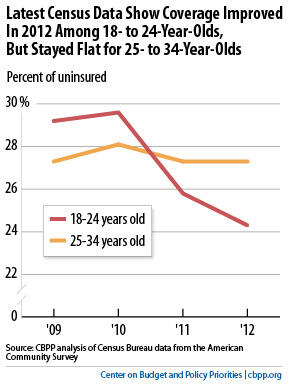
This marked the second consecutive year that the uninsured rate for this group has fallen, now down 5.2 percentage points since 2010. These coverage gains are due to growth in private coverage among young adults primarily resulting from a health reform provision that allows adult children to stay on their parents’ private insurance plans until they turn 26 .
Más sobre este Tema
Blog
New Census Bureau Data Show More Young Adults Have Health Insurance Coverage Due to Health Reform
20 de Septiembre, 2013
Blog
Poverty Has Fallen Since the 1960s, But Official Poverty Measure Masks Progress
13 de Septiembre, 2013
Manténgase al día
Reciba las últimas noticias y los reportes del Centro
